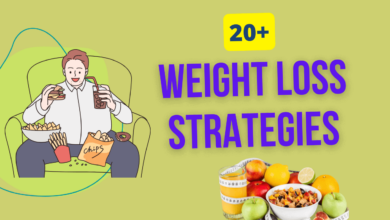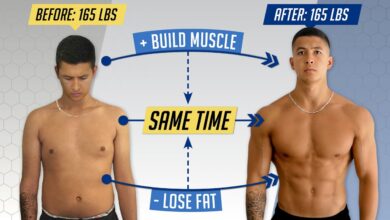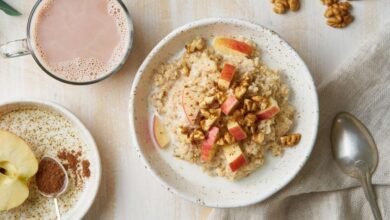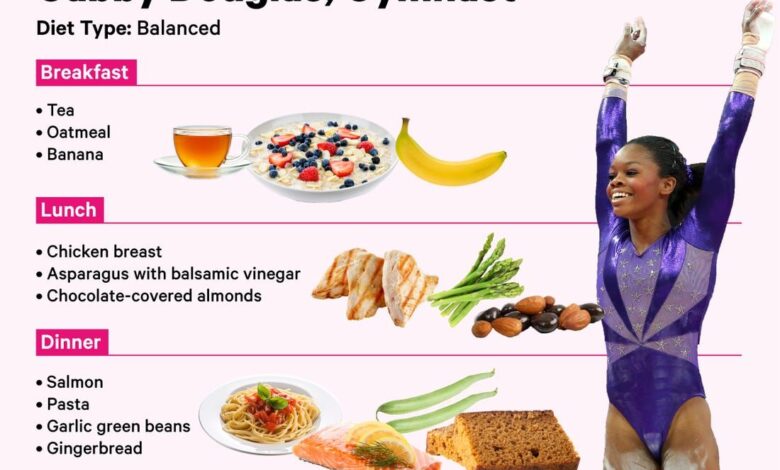
What 250 Calorie Breakfasts Look Like for 5 Diets
What 250 calorie breakfasts look like for 5 diets? It’s a question many people ask, especially those looking to manage their weight or follow a specific dietary plan. Breakfast is often called the most important meal of the day, and for good reason.
It kickstarts your metabolism, provides energy for the day, and can help you feel more satisfied and less likely to overeat later. But with so many different diets and calorie goals, finding the right breakfast can be challenging. This post will explore a variety of 250-calorie breakfast options for five popular diets: vegetarian, vegan, ketogenic, Mediterranean, and intermittent fasting.
We’ll dive into each diet’s principles and provide specific examples of delicious and nutritious breakfasts that fit the 250-calorie target. Whether you’re looking to lose weight, improve your health, or simply find new and exciting ways to start your day, this guide has something for everyone.
This post will examine the key considerations for each diet and provide a variety of options for each one. We’ll also discuss the nutritional benefits of each type of breakfast and address any potential drawbacks. So, let’s get started and explore the world of 250-calorie breakfasts!
The Importance of Breakfast and 250-Calorie Options
Breakfast is often referred to as the most important meal of the day. It provides your body with the energy it needs to function optimally after a long night of rest. A nutritious breakfast can help improve focus, boost metabolism, and regulate blood sugar levels throughout the day.
Calorie intake plays a crucial role in weight management and overall health. The number of calories you consume daily should be balanced with your physical activity levels to maintain a healthy weight. While calorie counting is not always necessary, understanding your calorie needs can help you make informed food choices.
250-Calorie Breakfasts: A Versatile Option
-calorie breakfasts offer a convenient and manageable way to start your day without feeling overly full or restricting your nutritional intake. These breakfasts are suitable for various dietary needs, whether you’re looking to lose weight, maintain a healthy weight, or simply enjoy a lighter meal.
250-Calorie Breakfast Options for Different Diets
The concept of a 250-calorie breakfast can be adapted to different dietary preferences and needs.
“A balanced breakfast should include a combination of protein, carbohydrates, and healthy fats to provide sustained energy and essential nutrients.”
Here are some examples of 250-calorie breakfasts for different diets:
- Weight Loss Diet:A bowl of oatmeal with berries and a sprinkle of nuts (approximately 250 calories). This breakfast provides fiber, protein, and healthy fats to keep you feeling full and satisfied until your next meal.
- Vegetarian Diet:A tofu scramble with spinach and avocado toast (approximately 250 calories). This breakfast offers a good source of protein, iron, and healthy fats.
- Vegan Diet:A smoothie made with banana, spinach, almond milk, and chia seeds (approximately 250 calories). This breakfast is packed with nutrients, including fiber, protein, and healthy fats.
- Paleo Diet:Scrambled eggs with sautéed mushrooms and a side of fruit (approximately 250 calories). This breakfast provides protein, healthy fats, and essential vitamins and minerals.
- Mediterranean Diet:Greek yogurt with berries and a drizzle of honey (approximately 250 calories). This breakfast is a good source of protein, calcium, and antioxidants.
250-Calorie Breakfast Options for Different Diets
A 250-calorie breakfast can be a great way to start your day, providing you with the energy you need to power through your morning while keeping your calorie intake in check. This can be especially helpful if you are trying to lose weight or maintain a healthy weight.
There are many different ways to create a 250-calorie breakfast, and the best option for you will depend on your individual dietary needs and preferences. This article will explore a few 250-calorie breakfast options for different diets, including vegan, vegetarian, keto, and Mediterranean diets.
250-Calorie Breakfast Options for Vegan Diets
A vegan diet excludes all animal products, including meat, poultry, fish, eggs, and dairy. A 250-calorie vegan breakfast can be packed with nutrients and fiber, keeping you feeling full and satisfied until your next meal.
| Diet | Breakfast Option | Calories | Key Ingredients |
|---|---|---|---|
| Vegan | Oatmeal with Berries and Nuts | 250 | 1/2 cup rolled oats, 1/2 cup berries (such as blueberries or raspberries), 1/4 cup chopped nuts (such as almonds or walnuts) |
| Vegan | Tofu Scramble with Vegetables | 250 | 1/2 cup firm tofu, 1/2 cup chopped vegetables (such as onions, peppers, and mushrooms), 1 tablespoon olive oil |
| Vegan | Smoothie with Fruit, Vegetables, and Protein Powder | 250 | 1 cup fruit (such as bananas or berries), 1/2 cup leafy greens (such as spinach or kale), 1 scoop vegan protein powder |
250-Calorie Breakfast Options for Vegetarian Diets
A vegetarian diet excludes meat, poultry, and fish but may include eggs and dairy products. This allows for a wide variety of breakfast options, incorporating protein, fiber, and healthy fats.
| Diet | Breakfast Option | Calories | Key Ingredients |
|---|---|---|---|
| Vegetarian | Eggs with Whole-Wheat Toast and Avocado | 250 | 2 eggs, 1 slice whole-wheat toast, 1/4 avocado |
| Vegetarian | Greek Yogurt with Berries and Granola | 250 | 1 cup Greek yogurt, 1/2 cup berries, 1/4 cup granola |
| Vegetarian | Cottage Cheese with Fruit and Nuts | 250 | 1/2 cup cottage cheese, 1/2 cup fruit (such as bananas or strawberries), 1/4 cup chopped nuts (such as almonds or walnuts) |
250-Calorie Breakfast Options for Keto Diets
The ketogenic diet is a high-fat, low-carbohydrate diet that aims to induce ketosis, a metabolic state where the body primarily uses fat for energy. This means breakfast options should be low in carbs and high in fat, like those listed below.
| Diet | Breakfast Option | Calories | Key Ingredients |
|---|---|---|---|
| Keto | Eggs with Bacon and Cheese | 250 | 2 eggs, 2 slices bacon, 1/4 cup shredded cheese |
| Keto | Avocado Toast with Smoked Salmon | 250 | 1 slice whole-wheat toast, 1/4 avocado, 2 oz smoked salmon |
| Keto | Keto Smoothie with Coconut Milk and Protein Powder | 250 | 1 cup unsweetened coconut milk, 1 scoop keto protein powder, 1/4 cup berries |
250-Calorie Breakfast Options for Mediterranean Diets
The Mediterranean diet emphasizes fruits, vegetables, whole grains, legumes, nuts, and olive oil. A 250-calorie Mediterranean breakfast can be delicious and nutritious, focusing on fresh, unprocessed foods.
From a protein-packed Greek yogurt parfait to a hearty veggie-filled omelet, 250 calorie breakfasts can be surprisingly satisfying and diverse. But don’t forget the importance of getting your veggies in! Check out 5 ways to up your vegetable game to add more colorful goodness to your diet.
You can easily incorporate those tips into your breakfast routine, like adding spinach to your smoothie or topping your oatmeal with sliced bell peppers. Once you’ve got your veggie game strong, you’ll be ready to explore even more creative and healthy 250 calorie breakfast options.
| Diet | Breakfast Option | Calories | Key Ingredients |
|---|---|---|---|
| Mediterranean | Greek Yogurt with Olive Oil and Herbs | 250 | 1 cup Greek yogurt, 1 tablespoon olive oil, 1 teaspoon herbs (such as oregano or basil) |
| Mediterranean | Whole-Wheat Toast with Hummus and Vegetables | 250 | 1 slice whole-wheat toast, 2 tablespoons hummus, 1/2 cup chopped vegetables (such as cucumbers, tomatoes, and bell peppers) |
| Mediterranean | Fruit Salad with Nuts and Seeds | 250 | 1 cup fruit (such as oranges, grapes, and berries), 1/4 cup chopped nuts (such as almonds or walnuts), 1 tablespoon seeds (such as chia seeds or flaxseeds) |
250-Calorie Breakfast Options for Weight Loss
If you are trying to lose weight, a 250-calorie breakfast can help you manage your calorie intake and feel full until your next meal. These breakfast options are typically low in calories and high in fiber and protein.
| Diet | Breakfast Option | Calories | Key Ingredients |
|---|---|---|---|
| Weight Loss | Oatmeal with Protein Powder and Berries | 250 | 1/2 cup rolled oats, 1 scoop protein powder, 1/2 cup berries |
| Weight Loss | Eggs with Whole-Wheat Toast and Vegetables | 250 | 2 eggs, 1 slice whole-wheat toast, 1/2 cup chopped vegetables (such as spinach or mushrooms) |
| Weight Loss | Greek Yogurt with Chia Seeds and Fruit | 250 | 1 cup Greek yogurt, 1 tablespoon chia seeds, 1/2 cup fruit (such as berries or bananas) |
Vegetarian Diet
A vegetarian diet, while often associated with a focus on fruits and vegetables, can still provide a balanced and satisfying breakfast with ample protein and fiber. These meals can be fulfilling and help you feel energized throughout the morning.
Examples of Vegetarian 250-Calorie Breakfast Options
Vegetarian breakfasts can be both delicious and nutritious. Here are some protein-rich and fiber-filled examples that stay within the 250-calorie range:
- Oatmeal with Berries and Nuts:A bowl of oatmeal (1/2 cup cooked) topped with a quarter cup of berries and a tablespoon of chopped nuts provides a good source of fiber, protein, and healthy fats.
- Tofu Scramble with Veggies:A simple scramble of tofu (1/2 cup) with chopped vegetables like spinach, onions, and peppers can be a hearty and protein-packed breakfast option.
- Whole-Wheat Toast with Avocado and Egg:A slice of whole-wheat toast topped with mashed avocado (1/4 avocado) and a boiled egg is a great source of protein, healthy fats, and fiber.
- Smoothie with Protein Powder and Fruits:A smoothie made with a scoop of protein powder, a cup of frozen fruits like berries or bananas, and a small amount of milk or yogurt is a convenient and nutrient-rich breakfast choice.
Vegetarian Breakfast Meal Plan for a Week
Here’s a sample vegetarian breakfast meal plan that offers a variety of options within the 250-calorie range:
| Day | Breakfast |
|---|---|
| Monday | 1/2 cup cooked oatmeal with 1/4 cup berries and 1 tbsp chopped almonds |
| Tuesday | 1 slice whole-wheat toast with 1/4 avocado and 1 boiled egg |
| Wednesday | 1 cup tofu scramble with 1/2 cup chopped spinach and 1/4 cup chopped onions |
| Thursday | Smoothie with 1 scoop protein powder, 1 cup frozen berries, and 1/2 cup unsweetened almond milk |
| Friday | 1/2 cup cottage cheese with 1/4 cup chopped fruit and 1/4 cup granola |
| Saturday | 1 cup veggie omelet with 1/2 cup chopped vegetables and 1/4 cup shredded cheese |
| Sunday | 1/2 cup quinoa porridge with 1/4 cup chopped fruit and 1 tbsp chia seeds |
Nutritional Benefits of Fruits, Vegetables, and Whole Grains in a Vegetarian Breakfast
Incorporating fruits, vegetables, and whole grains into your vegetarian breakfast provides numerous health benefits:
- Fiber:Fruits, vegetables, and whole grains are excellent sources of dietary fiber, which aids digestion, promotes regularity, and helps control blood sugar levels.
- Vitamins and Minerals:These foods are rich in essential vitamins and minerals, including vitamin C, potassium, folate, and magnesium, which support overall health and well-being.
- Antioxidants:Fruits and vegetables are packed with antioxidants, which help protect cells from damage caused by free radicals.
- Energy and Satiety:The fiber and complex carbohydrates in whole grains provide sustained energy throughout the morning, while the nutrients in fruits and vegetables contribute to feelings of fullness and satisfaction.
Vegan Diet
A vegan diet excludes all animal products, including meat, poultry, fish, eggs, and dairy. This can make it challenging to create a 250-calorie breakfast that provides adequate protein, as many high-protein foods are not vegan.
Vegan Protein Sources for Breakfast, What 250 calorie breakfasts look like for 5 diets
Plant-based protein sources are essential for a balanced vegan diet. Here are some vegan protein options that can be incorporated into a 250-calorie breakfast:
- Tofu:Tofu is a versatile protein source that can be scrambled, baked, or added to smoothies. One-half cup of firm tofu contains about 10 grams of protein and only 80 calories.
- Tempeh:Tempeh is a fermented soybean product that is rich in protein, fiber, and iron. One-half cup of tempeh contains about 19 grams of protein and 150 calories.
- Edamame:Edamame are immature soybeans that are a good source of protein and fiber. One-half cup of edamame contains about 17 grams of protein and 120 calories.
- Nuts and Seeds:Nuts and seeds, such as almonds, walnuts, chia seeds, and flaxseeds, are excellent sources of protein, healthy fats, and fiber. A quarter cup of almonds contains about 6 grams of protein and 160 calories.
- Plant-Based Protein Powder:Plant-based protein powders, such as pea protein, brown rice protein, and soy protein, can be added to smoothies or oatmeal for a protein boost. One scoop of plant-based protein powder typically contains about 20 grams of protein and 100 calories.
Vegan Breakfast Recipe
Here is a recipe for a vegan breakfast that includes plant-based protein, healthy fats, and fiber:
Tofu Scramble with Avocado Toast
Ingredients:* 1/2 cup firm tofu, crumbled
From protein-packed Greek yogurt bowls to veggie-loaded omelets, 250 calorie breakfasts can be surprisingly satisfying. But sometimes, you crave something a little more indulgent. That’s where 11 healthy pizzas under 400 calories come in. These pizzas are packed with flavor and toppings, proving that a healthy meal can still be delicious and satisfying.
So, whether you’re looking for a light and healthy breakfast or a guilt-free pizza night, there are plenty of options out there to keep you on track!
- 1/4 cup chopped onion
- 1/4 cup chopped bell pepper
- 1 tablespoon nutritional yeast
- 1/2 teaspoon turmeric
- 1/4 teaspoon salt
- 1/4 teaspoon black pepper
- 1 slice whole-wheat toast
- 1/4 avocado, mashed
- 1/4 cup spinach, chopped
Instructions:
From protein-packed smoothies to fiber-rich oatmeal, there’s a 250-calorie breakfast for every dietary need. But what about the question of pasta? Is it really a “no-no” for those watching their weight? It’s surprising to learn that, with a little careful planning, pasta can actually be part of a healthy diet.
Can pasta be healthy ? You bet! Now back to breakfast, let’s explore the diverse range of 250-calorie options for those following 5 popular diets, from keto to vegan.
- Heat a non-stick skillet over medium heat. Add the tofu, onion, and bell pepper and cook until softened, about 5 minutes.
- Stir in the nutritional yeast, turmeric, salt, and pepper. Cook for 1 minute more.
- Toast the bread and top with the mashed avocado and spinach.
- Serve the tofu scramble over the avocado toast.
Nutritional Information:* Calories: 250
Protein
20 grams
Fat
12 grams
Carbohydrates
25 grams
Fiber
10 gramsThis breakfast provides a good balance of protein, healthy fats, and fiber, making it a satisfying and nutritious start to your day.
Ketogenic Diet: What 250 Calorie Breakfasts Look Like For 5 Diets
The ketogenic diet is a high-fat, low-carbohydrate diet that forces the body to burn fat for energy instead of carbohydrates. This can be a challenging diet to follow, especially when it comes to breakfast. It’s important to ensure that you are getting enough calories, especially in the morning, to fuel your body and keep you satisfied until your next meal.
A 250-calorie keto breakfast can be achieved by focusing on healthy fats and protein sources while limiting carbohydrates.
Keto-Friendly Breakfast Options
The ketogenic diet emphasizes a high-fat, low-carbohydrate ratio, and breakfast is no exception. This section will explore examples of keto-friendly breakfast options that incorporate healthy fats and protein sources to create a satisfying and nutritious start to your day.
- Avocado Egg Toast: A slice of avocado, mashed and spread on a slice of keto-friendly bread, topped with a fried egg, is a delicious and filling keto breakfast option. The avocado provides healthy fats, while the egg provides protein and essential nutrients.
You can also add a sprinkle of cheese for additional flavor and protein.
- Keto Smoothie: A keto-friendly smoothie can be a quick and easy way to get your daily dose of healthy fats and protein. Combine unsweetened almond milk, a scoop of protein powder, a tablespoon of MCT oil, and a handful of spinach or kale for a nutritious and satisfying breakfast.
- Keto Oatmeal: While traditional oatmeal is high in carbohydrates, there are keto-friendly alternatives available. Try using almond flour or coconut flour as a base for your oatmeal. Add a tablespoon of butter or coconut oil, a scoop of protein powder, and a sprinkle of cinnamon for flavor and nutrition.
- Chia Seed Pudding: Chia seeds are a great source of fiber and omega-3 fatty acids. Combine chia seeds with unsweetened almond milk, a tablespoon of heavy cream, and a few drops of vanilla extract for a delicious and satisfying keto breakfast.
Incorporating Protein Sources
Protein is an essential macronutrient for building and repairing tissues, and it plays a crucial role in maintaining a healthy weight and blood sugar levels. It’s important to include protein sources in your keto breakfast to help you feel full and satisfied.
- Eggs: Eggs are a versatile and affordable source of protein. They can be cooked in various ways, including scrambled, fried, or poached. A couple of eggs can easily fit into a 250-calorie keto breakfast.
- Cheese: Cheese is a high-fat, high-protein food that can be enjoyed in moderation on a ketogenic diet. A small slice of cheddar cheese or a few cubes of mozzarella cheese can add flavor and protein to your breakfast.
- Greek Yogurt: While traditional yogurt is high in carbohydrates, Greek yogurt is a lower-carb option. Choose plain, unsweetened Greek yogurt and add a tablespoon of heavy cream or a few nuts for a satisfying keto breakfast.
Mediterranean Diet
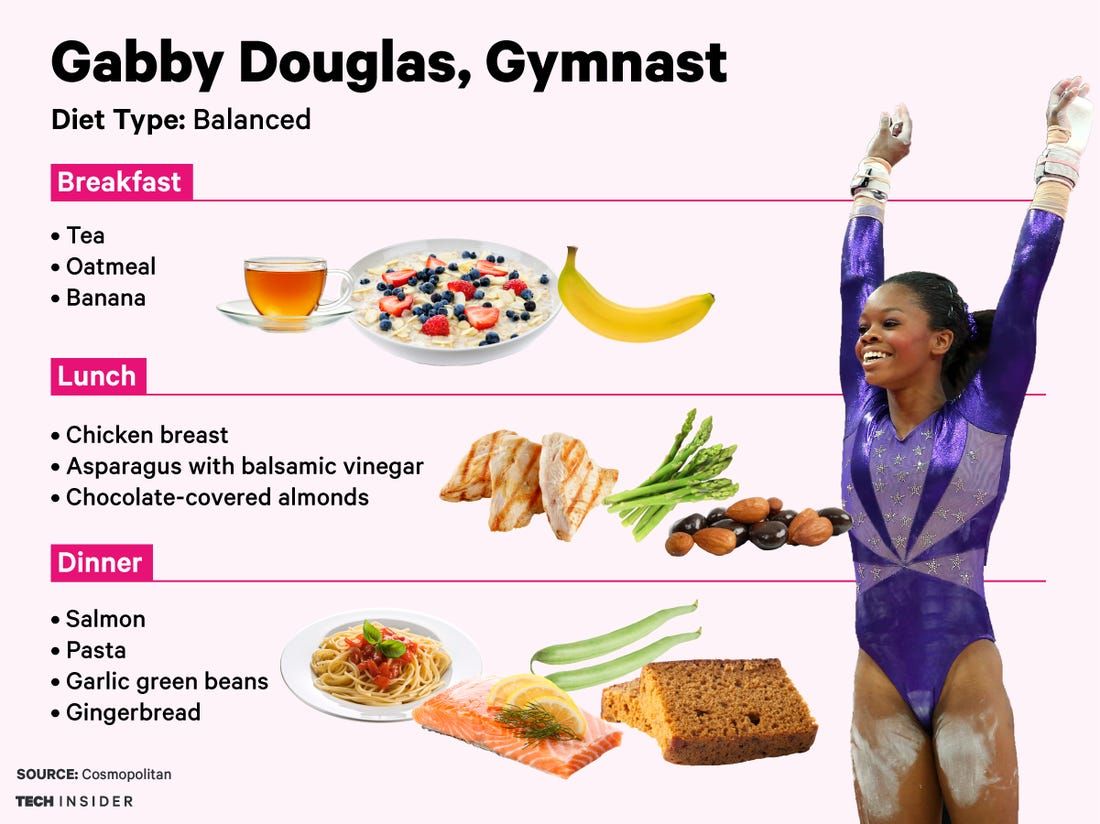
The Mediterranean diet is a way of eating that emphasizes whole, unprocessed foods, with an abundance of fruits, vegetables, legumes, whole grains, and healthy fats. It is inspired by the traditional dietary patterns of people living in the Mediterranean region, particularly in Greece, Italy, and Spain.
This diet has gained popularity due to its association with numerous health benefits, including reduced risk of heart disease, stroke, type 2 diabetes, and certain types of cancer.
Mediterranean Diet Principles Applied to Breakfast
The principles of the Mediterranean diet can be easily incorporated into breakfast. Here are some key aspects:
- Emphasis on Whole Grains:Start your day with a bowl of oatmeal, whole-grain toast, or a breakfast quinoa dish. These provide fiber, which aids digestion and keeps you feeling full.
- Abundance of Fruits and Vegetables:Include fresh or dried fruits like berries, bananas, or figs, and vegetables such as spinach, tomatoes, or bell peppers in your breakfast. They provide vitamins, minerals, and antioxidants.
- Healthy Fats:Incorporate olive oil, avocados, or nuts into your breakfast. These healthy fats promote heart health and help you feel satisfied.
- Moderate Protein:Include a source of lean protein, such as eggs, yogurt, or nuts, to provide sustained energy throughout the morning.
- Limited Processed Foods:Avoid sugary cereals, processed meats, and other highly processed breakfast items. These can contribute to weight gain and other health issues.
250-Calorie Mediterranean Breakfast Examples
Here are some examples of 250-calorie Mediterranean breakfasts that align with the diet’s principles:
- Oatmeal with Berries and Nuts:Combine half a cup of cooked oatmeal with a quarter cup of mixed berries and a tablespoon of chopped almonds. Drizzle with a teaspoon of olive oil and a sprinkle of cinnamon. This provides a good source of fiber, antioxidants, and healthy fats.
- Whole-Grain Toast with Avocado and Egg:Top two slices of whole-grain toast with half an avocado mashed with a sprinkle of salt and pepper. Add a hard-boiled egg for protein. This provides a balanced combination of healthy fats, fiber, and protein.
- Yogurt with Fruit and Chia Seeds:Combine a cup of plain yogurt with a quarter cup of chopped fruit, such as berries or melon. Sprinkle with two tablespoons of chia seeds for added fiber and omega-3 fatty acids. This is a refreshing and nutritious breakfast option.
- Mediterranean Breakfast Salad:Combine a cup of spinach with a quarter cup of chopped tomatoes, cucumbers, and feta cheese. Drizzle with a tablespoon of olive oil and a squeeze of lemon juice. This provides a light and flavorful breakfast that is rich in vitamins, minerals, and healthy fats.
Health Benefits of Incorporating Healthy Fats and Antioxidants
The Mediterranean diet’s emphasis on healthy fats and antioxidants plays a crucial role in its health benefits.
- Healthy Fats:Olive oil, avocados, and nuts are rich in monounsaturated and polyunsaturated fats, which are beneficial for heart health. They help lower bad cholesterol levels and improve blood vessel function.
- Antioxidants:Fruits, vegetables, and whole grains are packed with antioxidants, which protect cells from damage caused by free radicals. This helps reduce the risk of chronic diseases, such as cancer and heart disease.
Intermittent Fasting
Intermittent fasting (IF) is a popular dietary approach that involves cycling between periods of eating and fasting. It’s not a diet in the traditional sense, but rather a pattern of eating that can be customized to fit individual lifestyles and goals.
IF has gained traction for its potential benefits in weight loss, metabolic health, and overall well-being. Incorporating a 250-calorie breakfast within an IF plan can be a strategic approach to manage hunger, maintain energy levels, and support your fasting goals.
Incorporating a 250-Calorie Breakfast Within an Intermittent Fasting Plan
There are several ways to integrate a 250-calorie breakfast into an intermittent fasting plan, depending on the specific IF protocol you choose. Here are some common approaches:
- Time-Restricted Feeding (TRF):With TRF, you restrict your eating window to a certain number of hours each day. For example, if you follow a 16/8 protocol, you fast for 16 hours and eat within an 8-hour window. A 250-calorie breakfast could be consumed within this eating window, providing a light and nutritious start to your day.
- Alternate-Day Fasting (ADF):ADF involves alternating between days of full fasting and days of normal eating. On your eating days, you can incorporate a 250-calorie breakfast to break your fast and fuel your body for the day.
- Eat Stop Eat:This protocol involves fasting for 24 hours once or twice a week. On your eating days, you can include a 250-calorie breakfast to help you feel satiated and energized after your fast.
Benefits and Potential Drawbacks
Benefits of Combining a 250-Calorie Breakfast with Intermittent Fasting
- Improved Hunger Management:A small, nutrient-dense breakfast can help curb hunger pangs during your fasting window, making it easier to adhere to your IF plan.
- Enhanced Energy Levels:Consuming a balanced breakfast can provide your body with essential nutrients and energy to kickstart your day, even after a period of fasting.
- Support for Weight Loss:By reducing your overall calorie intake and promoting satiety, a 250-calorie breakfast can contribute to weight management goals.
- Potential for Improved Insulin Sensitivity:Some studies suggest that intermittent fasting may improve insulin sensitivity, which is beneficial for blood sugar control. A 250-calorie breakfast could help maintain blood sugar levels and support insulin sensitivity.
Potential Drawbacks
- Potential for Nutrient Deficiencies:A 250-calorie breakfast may not provide all the essential nutrients your body needs, especially if you are following a strict IF protocol. It’s crucial to ensure that you are consuming a balanced diet throughout your eating window to meet your nutritional requirements.
- Potential for Fatigue:While a 250-calorie breakfast can provide some energy, it may not be enough for some individuals, particularly those who are physically active or have high energy demands.
- Not Suitable for Everyone:Intermittent fasting is not recommended for everyone, including pregnant women, breastfeeding mothers, individuals with certain medical conditions, and those with a history of eating disorders. It’s important to consult with your doctor before starting any new dietary plan, including IF.
Choosing Foods for a Satiating and Nutrient-Dense 250-Calorie Breakfast
- High-Protein Options:Protein is known for its satiety-inducing properties. Include protein-rich foods like eggs, Greek yogurt, cottage cheese, or a protein shake to keep you feeling full.
- Healthy Fats:Healthy fats, such as those found in avocados, nuts, and seeds, can help slow down digestion and increase satiety.
- Fiber-Rich Foods:Fiber adds bulk to your meals and promotes a feeling of fullness. Incorporate foods like berries, chia seeds, or flaxseeds into your breakfast.
- Water:Drinking plenty of water can help you feel fuller and more energized. Aim to drink a glass of water before and after your breakfast.
Final Thoughts
As you can see, there are many delicious and nutritious 250-calorie breakfast options for a variety of diets. No matter what your dietary needs or preferences, there’s a breakfast out there for you. Remember to choose foods that are satisfying and provide you with the energy and nutrients you need to start your day off right.
Experiment with different combinations and find what works best for you. Happy breakfasting!


